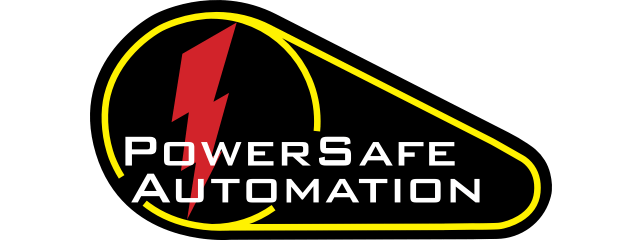In the manufacturing world, machine safety is non-negotiable. One overlooked safety feature can lead to injuries, OSHA violations, and expensive downtime. For Safety Managers, maintaining machine guarding isn’t just about regulatory checkboxes—it’s about creating a culture of safety, reliability, and performance. That’s where preventative maintenance (PM) on machine guarding becomes vital.
In this blog, we explore the practical reasons why preventative maintenance is critical to workplace safety, how to implement it effectively, and the long-term value it brings to your facility.
1. Why Preventative Maintenance for Machine Guarding Matters
Machine guarding is your frontline defense against contact with moving parts, flying debris, and mechanical pinch points. However, over time, even the most robust guards can degrade—loosened bolts, worn interlocks, corrosion, or intentional bypassing can all render your system ineffective.
Neglected guards lead to:
-
Increased injury risk
-
OSHA compliance violations
-
Costly equipment downtime
-
Low employee morale
A strong preventative maintenance program ensures guarding systems remain intact, compliant, and effective—safeguarding both workers and productivity.
2. Common Failures in Machine Guarding
Before you can maintain guards properly, you need to understand what typically goes wrong:
-
Loose or missing fasteners that allow guard movement
-
Cracked or broken panels that no longer shield hazards
-
Blocked or nonfunctional interlocks that defeat fail-safes
-
Debris buildup, reducing visibility and causing jams
-
Removed or bypassed guards—often during maintenance
Each of these issues increases risk and decreases compliance.
3. Regulatory Requirements: OSHA and ANSI
According to OSHA’s 29 CFR 1910 Subpart O, all machine guarding must be maintained in a condition that ensures operator safety. In addition, ANSI B11 standards demand regular inspections, maintenance logs, and validation of guarding systems.
Non-compliance consequences:
-
OSHA fines of up to $15,000 per violation
-
Increased insurance premiums
-
Greater liability exposure in case of injury
Regular preventative maintenance helps document due diligence and positions your facility as a safety leader.
4. Real Business Benefits of Preventative Maintenance
Beyond compliance, PM delivers tangible business value.
Reduced Downtime
-
Guards that are well-maintained don’t interfere with operations.
-
Malfunctions that could trigger emergency stops are prevented.
Increased Equipment Lifespan
-
Regular lubrication, tightening, and cleaning reduce wear and tear.
-
Investing in upkeep delays costly replacements.
Boosted Productivity
-
Operators work with more confidence.
-
Maintenance teams face fewer emergency calls.
Lower Total Cost of Ownership (TCO)
-
Early detection of issues avoids expensive repairs.
-
Prevents small problems from becoming big failures.
5. How to Build a Preventative Maintenance Program for Guarding
Step 1: Inventory Your Machine Guards
Create a complete list of machines and their safety components. Track:
-
Guard type (fixed, interlocked, adjustable)
-
Machine model and location
-
Manufacturer’s inspection intervals
This baseline helps prioritize maintenance scheduling.
Step 2: Create a Guarding Inspection Checklist
Standardized inspections keep evaluations consistent. Include:
-
Integrity of panels and frames
-
Proper alignment and coverage
-
Interlock functionality
-
Bolt tightness and fastener presence
-
Obstructions, debris, or modifications
Step 3: Set Inspection Frequencies
Tailor the schedule based on:
-
Machine usage intensity
-
Risk level
-
Environmental exposure
Suggested intervals:
-
Weekly: High-risk or heavily used machines
-
Monthly: Medium-risk
-
Quarterly: Low-risk or backup machines
Use a CMMS (Computerized Maintenance Management System) to automate tasks and record findings.
Step 4: Train Maintenance and Operations Staff
Everyone on the floor should:
-
Know how to identify compromised guards
-
Understand why guards must never be bypassed
-
Report issues immediately
Include guarding maintenance in LOTO (Lockout/Tagout) training and safety meetings.
Step 5: Act Quickly on Issues
If a guard is damaged or removed, act immediately:
-
Don’t rely on temporary fixes
-
Stock replacement parts or modular panels
-
Never run machines without approved protection
Step 6: Document Everything
Keep detailed records of:
-
Inspections
-
Repairs and replacements
-
Training sessions
-
Guard-related incidents or near misses
These records are invaluable during audits and legal reviews.
6. The Role of Professional Guarding Installers in Maintenance Programs
Even with internal PM processes, hiring professional guarding installers like PowerSafe Automation enhances safety outcomes. We offer:
-
Expert safety assessments and risk analysis
-
Custom solutions for unique or legacy equipment
-
Turnkey installations with full documentation
-
Ongoing maintenance support and training
Installing and maintaining machine guarding is a specialized skill—don’t risk leaving it to general contractors or undertrained staff.
7. Preventative Maintenance Case Study: Before & After Results
Before: A legacy milling machine had misaligned perimeter guarding and failed interlocks, triggering weekly emergency stops.
After: Our team installed custom-fit guarding, new safety-rated interlocks, and trained operators.
Results:
-
45% fewer maintenance calls
-
100% ANSI compliance
-
20% increase in machine uptime
-
Zero injuries or OSHA citations over 12 months
Preventative maintenance and proper installation worked hand-in-hand to transform safety and productivity.
8. Bonus Tip: Involve Engineering Early
When modifying or adding new machinery:
-
Involve your safety team and engineers from the start
-
Ensure guarding is designed into the layout
-
Avoid expensive retrofits or unsafe setups later
This collaboration reduces future maintenance burden and supports proactive safety design.
Maintenance Is Safety
Preventative maintenance for machine guarding isn’t just a routine task—it’s a business-critical function. When done right, it safeguards people, maximizes uptime, and demonstrates a culture of continuous improvement.
By following the steps outlined here and partnering with professionals, you create a safer, more compliant, and more productive manufacturing environment.
Ready to Protect Your Facility?
Power Safe Automation offers:
-
Nationwide turnkey machine guarding installations
-
Custom safety audits and retrofits
-
Preventative maintenance and operator training
Contact us today to schedule a consultation or download your free maintenance checklist.



